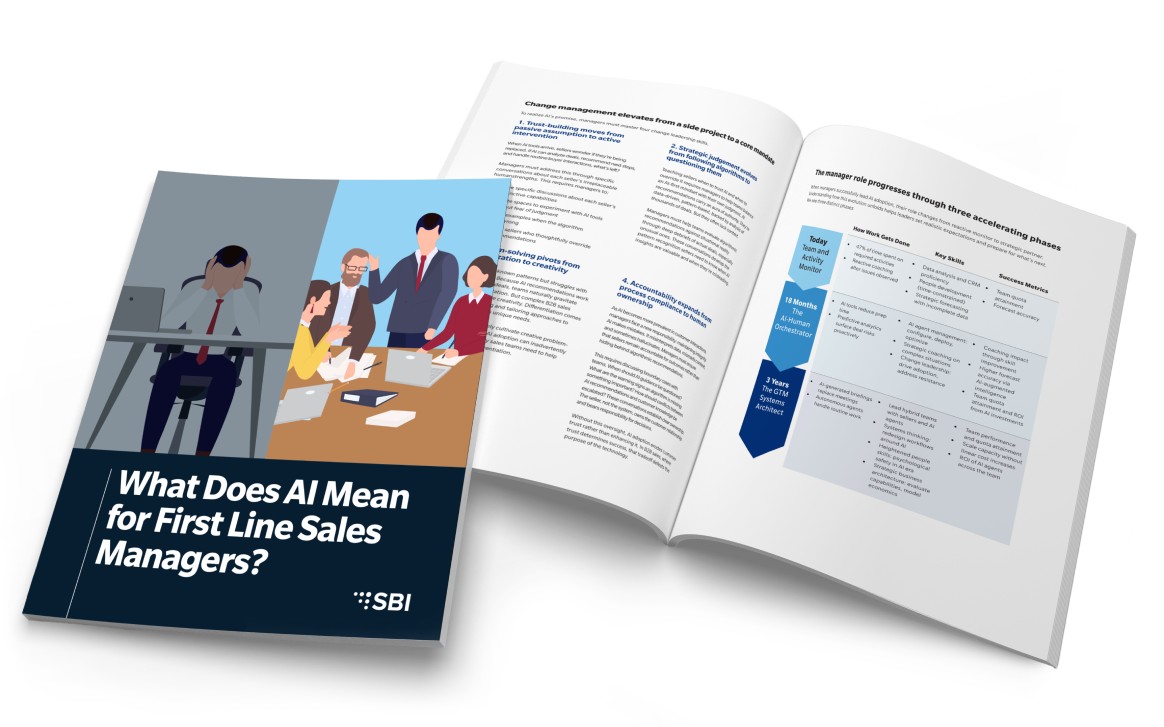

It means the end of the "admin-heavy" era. Stop drowning in data and start architecting revenue.
Revenue growth has collapsed.
Growth plummeted from 22% in 2021 to a projected 5% in 2025. While leaders look for external excuses, the root cause is internal: a broken frontline operating model where managers spend 47% of their time on low-value administration and only 15% on coaching.

Most organizations will fail at AI adoption because they layer technology over a broken process. To restore growth, you must use AI to fundamentally shift the manager’s mandate from "inspecting the past" to "influencing the future."
Flip the ratio: Admin to coaching
AI offers a specific operational lever: it can reduce administrative burden by 26% and double coaching time to 32%. But this only happens if you strip away the "Team Monitor" model and force a new standard of behavior.
The 4 pillars of AI change leadership
Technology is the easy part. The challenge is managerial. To prevent another failed technology investment, managers must master four non-negotiable skills: